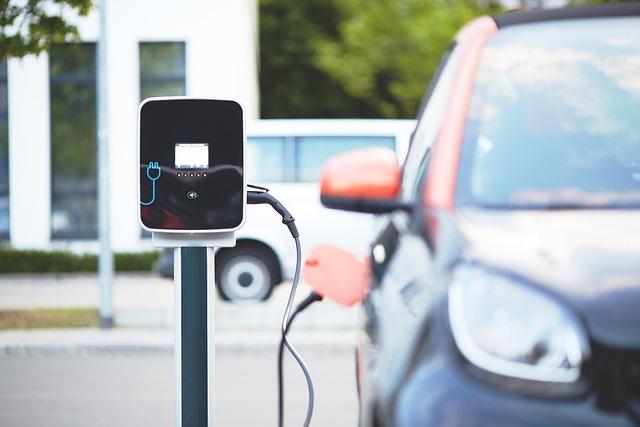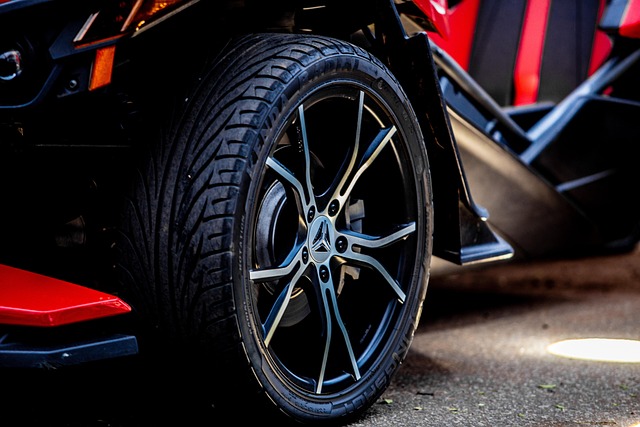Looking to register your car in California? This comprehensive guide walks you through every step, from understanding the process to finalizing the registration. We cover crucial aspects like gathering essential documents, performing a DMV VIN verification, and completing the registration application with ease. By following these straightforward steps, you’ll have your vehicle registered smoothly and efficiently in no time.
- Understanding the Registration Process
- Gather Required Documents
- Perform DMV VIN Verification
- Complete the Registration Application
- Finalize and Register Your Vehicle
Understanding the Registration Process

Understanding the Registration Process is key to a smooth car registration experience in California. The process begins with several essential steps, including gathering required documents and undergoing a DMV VIN verification. This verification ensures that your vehicle meets safety standards and identifies potential issues before registration.
A mobile VIN verification service can simplify this process even further by allowing you to complete the VIN check from the comfort of your home or office. These services utilize advanced technology for accurate, fast, and efficient mobile vin inspection, ensuring a seamless transition towards registering your vehicle in California.
Gather Required Documents

Before registering your car in California, ensure you have all the necessary documents ready. This process typically requires proof of ownership, which can be established with a valid bill of sale or previous registration papers. Additionally, you’ll need to provide a current vehicle inspection report and a completed application form. It is essential to undergo a DMV (Department of Motor Vehicles) VIN (Vehicle Identification Number) verification for this purpose, ensuring the accuracy of your car’s details.
One convenient way to facilitate this process is through a mobile vin verifier or inspector. These services allow you to get real-time VIN checks using your smartphone, making it easier to verify crucial information about your vehicle before registration. Having accurate and up-to-date documentation simplifies the entire registration procedure at the DMV.
Perform DMV VIN Verification

Before registering your car in California, performing a DMV VIN (Vehicle Identification Number) verification is a crucial step. This process ensures that your vehicle meets all legal requirements and helps verify its history and authenticity. You can conduct this check through the California Department of Motor Vehicles (DMV) website or by visiting a local DMV office.
A mobile vin verification or inspection, as it’s sometimes called, is particularly convenient for many drivers. This service allows you to get your vehicle’s history report quickly and efficiently without having to visit a DMV in person. It involves scanning the VIN and accessing detailed information about the car’s past, including ownership records, accident reports, and maintenance histories. Ensuring these checks are done properly can help protect you from potential issues and ensure a smooth registration process.
Complete the Registration Application

To begin the registration process, you’ll need to complete the Registration Application form provided by the California Department of Motor Vehicles (DMV). This form requires essential details about your vehicle, including its make, model, year, and unique identifier – the Vehicle Identification Number (VIN). Accurately entering this information is crucial for a successful dmv vin verification.
Among the documents you’ll need to submit is proof of identification and valid insurance. Some DMV locations also offer the option for mobile vin verification through their app or a designated mobile verifier, streamlining the process by allowing you to complete the VIN inspection right from your smartphone.
Finalize and Register Your Vehicle

Once you’ve purchased your vehicle, it’s time to finalize its registration process. Start by ensuring that all necessary paperwork is in order, including the sales receipt, certificate of title (or a bill of sale if the seller is not the registered owner), and any required emissions test results. Next, schedule a DMV (Department of Motor Vehicles) visit or use their online services to complete the registration process. During this step, you’ll need to provide proof of insurance and undergo a vin (vehicle identification number) verification check. This can be done easily with a mobile vin verifier, allowing you to perform a quick and convenient inspection at any time.
The DMV will review your documentation and conduct a thorough inspection, including a visual examination and a dmv vin verification process. Once your vehicle passes all checks, the DMV will issue a registration certificate, and your car will be officially registered in California. Always keep your registration documents up to date and ensure regular vin inspections to maintain compliance with local regulations.
Registering a car in California involves understanding the process, gathering essential documents, and completing key steps. By performing a DMV VIN verification, filling out the registration application accurately, and finalizing the required paperwork, you can ensure your vehicle is legally registered and ready to hit the road. This straightforward process streamlines vehicle ownership and keeps you compliant with California’s regulations.



